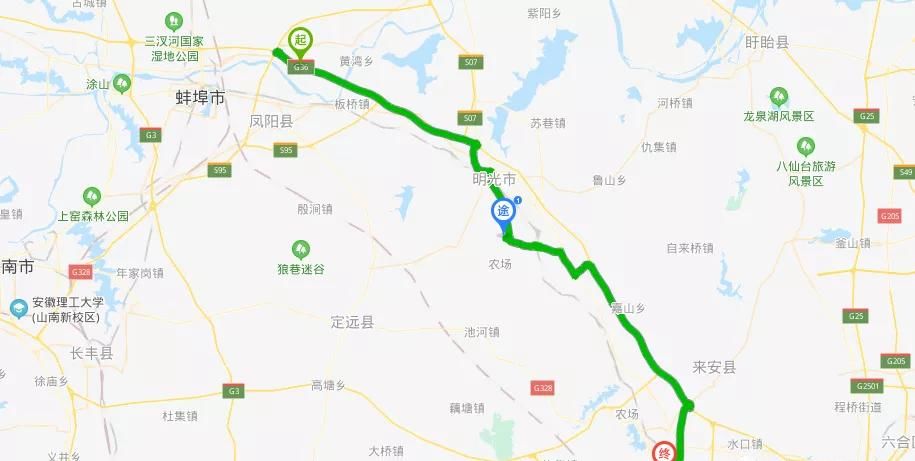жң¬зҜҮдё»иҰҒи®Іиҝ°еҰӮдҪ•дҪҝз”Ёеҹәжң¬зҡ„жіЁи§Ј @Cacheable @CachePut @CacheEvict ж“ҚдҪңзј“еӯҳ
1.жҲ‘们еҜје…Ҙredisзҡ„дҫқиө–
<!--иҝҷйҮҢRedisжҲ‘з»ҷдәҶзүҲжң¬--> <dependency> <groupId>org.springframework.boot</groupId> <artifactId>spring-boot-starter-data-redis</artifactId> <version>1.5.10.RELEASE</version> </dependency> <dependency> <groupId>org.springframework.boot</groupId> <artifactId>spring-boot-starter-cache</artifactId> </dependency><!--дҪҝз”Ёй…ҚзҪ®зұ»ж—¶пјҢйҳІжӯўд№ұз ҒйңҖиҰҒз”ЁеҲ°зҡ„еҢ…--> <dependency> <groupId>org.springframework.boot</groupId> <artifactId>spring-boot-configuration-processor</artifactId> <optional>true</optional> </dependency>2.зј–еҶҷй…ҚзҪ®зұ»
@ConfigurationProperties(prefix = "spring.cache.redis")@Configurationpublic class RedisConfig { private Duration timeToLive = Duration.ZERO; public void setTimeToLive(Duration timeToLive) { this.timeToLive = timeToLive; } @Bean /** * иҜҘbeanеҸӘй’ҲеҜ№cacheеӯҳе…ҘеҲ°ж•°жҚ®д№ұз Ғй—®йўҳ */ public RedisCacheManager cacheManager(RedisConnectionFactory factory) { RedisSerializer<String> redisSerializer = new StringRedisSerializer(); Jackson2JsonRedisSerializer jackson2JsonRedisSerializer = new Jackson2JsonRedisSerializer(Object.class); //и§ЈеҶіжҹҘиҜўзј“еӯҳиҪ¬жҚўејӮеёёзҡ„й—®йўҳ ObjectMApper om = new ObjectMapper(); om.setVisibility(PropertyAccessor.ALL, JsonAutoDetect.Visibility.ANY); om.enableDefaultTyping(ObjectMapper.DefaultTyping.NON_FINAL); jackson2JsonRedisSerializer.setObjectMapper(om); // й…ҚзҪ®еәҸеҲ—еҢ–пјҲи§ЈеҶід№ұз Ғзҡ„й—®йўҳпјү RedisCacheConfiguration config = RedisCacheConfiguration.defaultCacheConfig() .entryTtl(timeToLive) .serializeKeysWith(RedisSerializationContext.SerializationPair.fromSerializer(redisSerializer)) .serializeValuesWith(RedisSerializationContext.SerializationPair.fromSerializer(jackson2JsonRedisSerializer)) .disableCachingNullValues(); RedisCacheManager cacheManager = RedisCacheManager.builder(factory) .cacheDefaults(config) .build(); return cacheManager; }}3.й…ҚзҪ®ж–Ү件
#иҰҒиҝһжҺҘзҡ„ж•°жҚ®жҳҜе“ӘдёӘspring.redis.database=1#ж•°жҚ®иҝһжҺҘең°еқҖspring.redis.host=localhost#з«ҜеҸЈеҸ·spring.redis.port=6379#иҝһжҺҘи¶…ж—¶ж—¶й—ҙspring.redis.timeout=1s#жңҖеӨ§иҝһжҺҘж•°spring.redis.jedis.pool.max-active=20#жңҖеӨ§з©әй—ІиҝһжҺҘspring.redis.jedis.pool.max-idle=20#жңҖе°Ҹз©әй—ІиҝһжҺҘspring.redis.jedis.pool.min-idle=10#жңҖеӨ§зӯүеҫ…йҳ»еЎһзӯүеҫ…ж—¶й—ҙspring.redis.jedis.pool.max-wait=-1ms#еңЁеҶҷе…ҘRedisж—¶жҳҜеҗҰиҰҒдҪҝз”ЁkeyеүҚзјҖspring.cache.redis.use-key-prefix=true#keyеүҚзјҖspring.cache.redis.key-prefix=dev#жҳҜеҗҰе…Ғи®ёжңүnullеҖјspring.cache.redis.cache-null-values=false#и®ҫзҪ®зј“еӯҳеӯҳеңЁж—¶й—ҙпјҢеҸӘй’ҲеҜ№cacheableеӯҳе…Ҙж•°жҚ®жңүз”Ёspring.cache.redis.time-to-live=120s4.зҺ°еңЁжҲ‘们зҡ„зҺҜеўғеҮҶеӨҮеҘҪдәҶпјҢејҖе§Ӣзј–еҶҷд»Јз Ғ
иҝҷйҮҢжҳҜpojo
@Table(name = "user1")public class User implements Serializable { @Id private Integer id; private String name; private String pwd; public Integer getId() { return id; } public void setId(Integer id) { this.id = id; } public String getName() { return name; } public void setName(String name) { this.name = name; } public String getPwd() { return pwd; } public void setPwd(String pwd) { this.pwd = pwd; } @Override public String toString() { return "User{" + "id=" + id + ", name='" + name + ''' + ", pwd='" + pwd + ''' + '}'; }}иҝҷйҮҢжҳҜdaoзұ»
@org.Apache.ibatis.annotations.Mapperpublic interface UserMapper extends Mapper<User> {}иҝҷйҮҢжҳҜеңЁserviceзұ»дёҠдҪҝз”ЁжіЁи§Ј
@CacheConfig(cacheNames = "user")//жіЁж„Ҹ,з”ЁдәҺеҗҢдёҖй…ҚзҪ®з»ҷе…¶е®ғжіЁи§Јй…ҚзҪ®еҗҚз§°public class UserServiceImpl implements UserService { @Autowired private UserMapper userMapper; @Override @Cacheable(key="#p0")//иҜҘжіЁи§Јз”ЁдәҺеҗ‘зј“еӯҳдёӯеӯҳе…Ҙж•°жҚ® public User findUser(Integer id) { System.out.println("жҹҘиҜўж•°жҚ®дәҶ"+id); User user = userMapper.selectByPrimaryKey(id); return user; } @Override @CachePut(key="#p0.id")//иҜҘжіЁи§Јз”ЁдәҺжӣҙж–°зј“еӯҳдёӯзҡ„жіЁи§Ј public User updateUser(User user) { userMapper.updateByPrimaryKeySelective(user); return user; } @Override @CacheEvict(key="#p0")//иҜҘжіЁи§Јз”ЁдәҺеҲ йҷӨзј“еӯҳ public void deleteUser(Integer id) { userMapper.deleteByPrimaryKey(id); } @Override public List<User> findUsers() { return userMapper.selectAll(); }}жіЁж„ҸпјҢиҝҷйҮҢйңҖиҰҒиҜҙжҳҺдёҖдёӢпјҢ#p0代表第дёҖдёӘеҸӮж•°пјҢиҝ”еӣһеҖјй»ҳи®ӨжҳҜж–№жі•зҡ„иҝ”еӣһеҖј,@Cacheableд№Ӣзұ»зҡ„жіЁи§Јеҝ…йЎ»иҰҒжңүvalueеҖјпјҢиҝҷйҮҢжҲ‘еңЁзұ»дёҠеҠ @CacheConfigжіЁи§ЈпјҢдҪҝдёӢйқўзҡ„жіЁи§ЈжңүдәҶеҗҢдёҖдёӘvalueеҖј
иҝҷйҮҢжҳҜcontrollerйҮҢйқўзҡ„д»Јз Ғ
@RestController@RequestMapping("/user")public class UserController { @Resource private UserService userService; @GetMapping public ResponseEntity<List<User>> findUsers(){ try { List<User> users = userService.findUsers();return new ResponseEntity<>(users,HttpStatus.OK); } catch (Exception e) { e.printStackTrace(); return new ResponseEntity<>(HttpStatus.INTERNAL_SERVER_ERROR); } } @GetMapping("/{id}") public ResponseEntity<User> findUser(@PathVariable("id")Integer id){ try { User user = userService.findUser(id); return new ResponseEntity<>(user, HttpStatus.OK); } catch (Exception e) { e.printStackTrace(); return new ResponseEntity<>(HttpStatus.INTERNAL_SERVER_ERROR); } } @PutMapping public ResponseEntity<String> updateUser(@RequestBody User user){ try { userService.updateUser(user); return new ResponseEntity<>("дҝ®ж”№жҲҗеҠҹ",HttpStatus.OK); } catch (Exception e) { e.printStackTrace(); return new ResponseEntity<>(HttpStatus.INTERNAL_SERVER_ERROR); } } @DeleteMapping("/{id}") public ResponseEntity<Void> deleteUser(@PathVariable("id")Integer id){ try { userService.deleteUser(id); return new ResponseEntity<>(HttpStatus.OK); } catch (Exception e) { e.printStackTrace(); return new ResponseEntity<>(HttpStatus.INTERNAL_SERVER_ERROR); } }}
жҺЁиҚҗйҳ…иҜ»
- MacдҪҝз”ЁеӨҡжҳҫзӨәеҷЁзҡ„еҮ дёӘеҹәжң¬е·Ҙе…·е’ҢжҠҖе·§
- жўҰи§ҒеҲ«дәәдҪҝз”Ёзјқзә«жңәзјқиЎЈжңҚ жўҰи§ҒеҲ«дәәдҪҝз”Ёзјқзә«жңәжҳҜд»Җд№Ҳж„ҸжҖқ
- жө…жһҗе“Әдәӣз«ҷй•ҝеҸҜд»ҘдҪҝз”ЁзҷҫеәҰз»ҹи®Ў
- SpringBootж•ҙеҗҲlog4j2иҝӣиЎҢж—Ҙеҝ—й…ҚзҪ®еҸҠйҳІеқ‘жҢҮеҚ—
- йҳҝйҮҢдә‘ECSжңҚеҠЎеҷЁзӣ‘жҺ§иө„жәҗдҪҝз”Ёжғ…еҶө
- е°ҸзҷҪйғҪиғҪдҪҝз”Ёbashи„ҡжң¬зј–еҶҷй»‘е®ўе·Ҙе…·
- жұҪиҪҰеҶ…еӨ–еҫӘзҺҜиҜҘжҖҺж ·дҪҝз”Ёпјҹ
- дҪҝз”ЁProtobufеўһејәжӮЁзҡ„REST API
- win7зҡ„зЈҒзӣҳзўҺзүҮж•ҙзҗҶеңЁе“ӘйҮҢ
- жҠ—йЈҺж№ҝиҚҜзү©зҡ„дҪҝз”ЁеҺҹеҲҷ

















